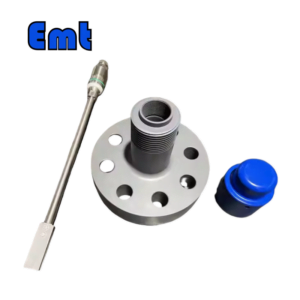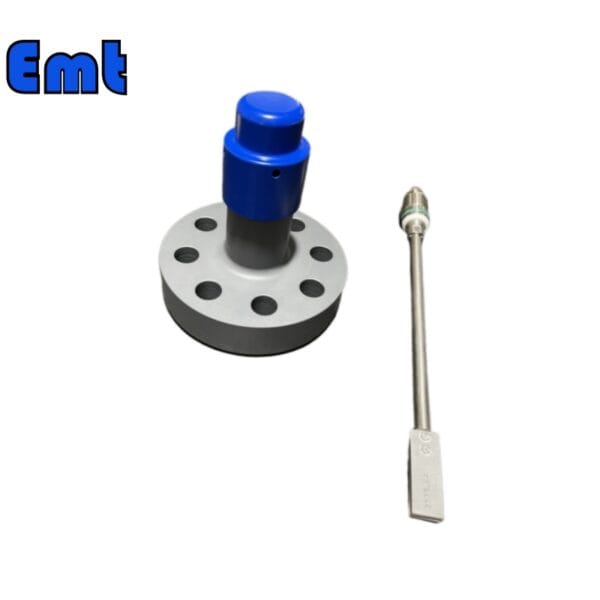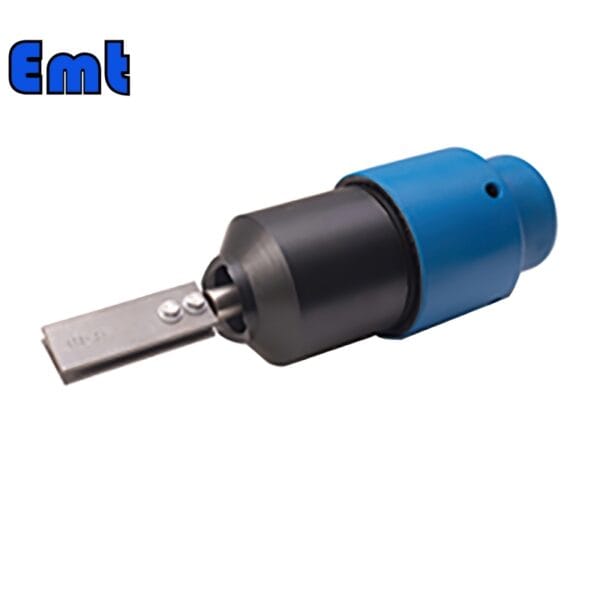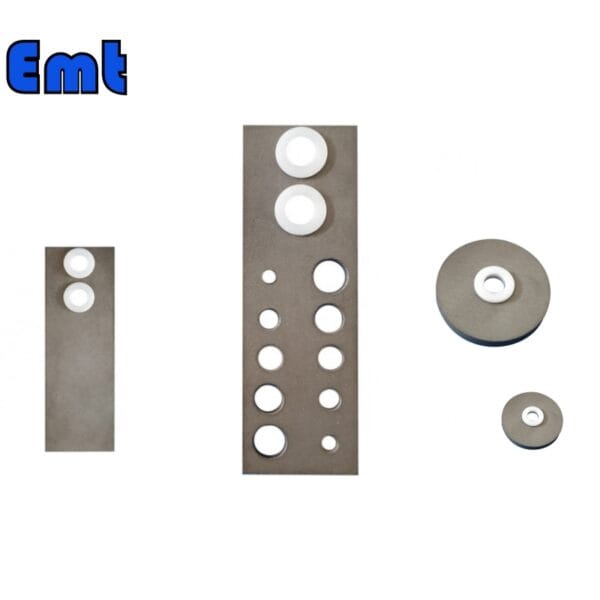
Introduction
Metal Corrosion coupons are essential for accurately monitoring corrosion rates within industrial systems such as pipelines and tanks. By exposing specific metal types to operating environments, these coupons accumulate measurable corrosion, revealing material degradation rates. This process helps determine system longevity and maintenance needs, making it a cost-effective corrosion monitoring method. They require no complex equipment, broadening their accessibility across industries.
Using corrosion coupons facilitates effective preventive maintenance by providing data to schedule necessary upkeep before severe damage occurs, avoiding costly repairs. They also evaluate material performance under harsh conditions, aiding in material selection and protective measures. Regular use of corrosion coupons ensures equipment operates safely and complies with industry regulations, enhancing system optimization and cost management. This proactive approach significantly boosts safety and operational efficiency in environments prone to corrosion.
What Metal Corrosion Coupon Don’t Do?
Metal Corrosion coupons aim to predict a system’s overall corrosion rate but fall short in replicating actual system conditions. They often fail to experience the same flow and temperature variations found elsewhere in the system, limiting their accuracy. Furthermore, corrosion coupons don’t undergo the severe temperature effects typically seen in real operational environments.
Additionally, these coupons don’t experience galvanic reactions because they don’t directly contact metal surfaces, missing some electrochemical reactions. This placement means they can’t track corrosion in low-flow areas, which tend to accumulate significant corrosion undetected by the coupons. They primarily measure general corrosion, overlooking specific issues like under-deposit corrosion or significant deposit buildup in high-risk areas. Despite these limitations, many facilities still require the use of corrosion coupons, following specific procedures for their installation and monitoring.
How to use Metal Corrosion Coupons effectively?
To use metal corrosion coupons effectively, install them in areas that reflect typical system conditions like flow, temperature, and pressure. Proper installation is crucial. You should ensure coupons are mounted in racks without touching metal surfaces to prevent galvanic reactions. Regularly monitor and replace the coupons, varying from every three months to annually, to track corrosion progression over time.
After retrieval, clean the coupons thoroughly and record their weight before and after to accurately calculate corrosion rates. Maintain detailed records of each coupon’s lifecycle, including installation and retrieval dates, and environmental conditions. Analyze the data considering the specific operating conditions to understand the corrosion mechanisms. Use this data to inform maintenance decisions, adjust corrosion protection strategies, and enhance the system’s durability and efficiency.
Parameters
| Model | |||||||||||||
| CC | Corrosion Coupons | ||||||||||||
| -Code | Plug Body Assembly | ||||||||||||
| Pxxx | Type | Material | Sealing Material | ||||||||||
| 0 | No Request | 0 | CS | 0 | No Request | ||||||||
| 1 | Hollow Plug Body | 1 | 316SS | 1 | Viton O-Ring / PTFE Primary Packing | ||||||||
| 2 | Solid Plug Body | 2 | 316LSS | 2 | HNBR | ||||||||
| 3 | DUPLEX SS | ||||||||||||
| 4 | INCONEL | ||||||||||||
| Type of Coupon Holder | |||||||||||||
| SR | Fixed Coupon Holder for assembling rectangular coupon | ||||||||||||
| AR | Adjustable Coupon Holder for assembling rectangular coupon | ||||||||||||
| LR | Ladder Coupon Holder for assembling rectangular coupon | ||||||||||||
| SC | Fixed Coupon Holder for assembling circular coupon | ||||||||||||
| AC | Adjustable Coupon Holder for assembling circular coupon | ||||||||||||
| -Pipe Size | |||||||||||||
| x | Pipe Size in inch | ||||||||||||
| – Coupon Size | |||||||||||||
| A×B×C | Coupon Size in inch or mm | ||||||||||||
| – Coupon Material | |||||||||||||
| x | Grade | ||||||||||||
| -Finishing of Coupon | |||||||||||||
| 0 | Mill | ||||||||||||
| 1 | Glass Bead | ||||||||||||
| – Isolation Gasket | |||||||||||||
| 0 | No Gasket | ||||||||||||
| 1 | Nylon Gasket | ||||||||||||
| 2 | PTFE Gasket | ||||||||||||
| For Example CC-P221-SR-6″-3″×1/2″×1/8″-MS1018-0-2 CC: Corrosion Coupon | |||||||||||||
| P221: Solid Plug Body in 316LSS Viton O-Ring and PTFE Primary Packing | |||||||||||||
| SR-6″:Fixed Coupon Holder for assembling rectangular coupons and for 6″pipe | |||||||||||||
| 3″×1/2″×1/8″: Coupon Size MS1018: Coupon Material | |||||||||||||
| 0: Finishing of Coupon is Mill 2: Material of Isolation Gasket is PTFE | |||||||||||||
Corrosion Coupon Types
| Name | Strip Coupon | Multihole Strip Coupon | Disc Coupon |
| Applications | Commonly used for most evaluations. | Use with low-pressure access equipment or through narrow ports that a standard 3/4 inch wide coupon cannot pass. | These circular coupons work in multiple disc monitoring applications. |
| Size | 3”*3/4”*1/16” (76.2mm*19.0mm*3.2mm) | 3”*1/2”*1/16” (76.2mm*12.7mm*3.2) With mounting holes | Φ1.25”(31.8mm)Thickness 1/16”(3.2mm) |
Corrosion coupons are pre-weighed, uniform-sized metal strips used to measure corrosion rates. These coupons, made from metals representative of the system, fit into a coupon rack within the system. Normally, water from the system circulates over these coupons for about 30 to 90 days. After this period, technicians remove the coupons and send them to a lab for cleaning and re-weighing. By analyzing the weight loss and the coupon’s dimensions, they calculate the corrosion rate in mils per year (mpy), where 1.0 mil/year equals 1/1,000th of an inch of metal loss annually. To convert corrosion rates from millimeters per year (mm/y) to mpy, multiply the mm/y value by 39.4.
Using Corrosion Coupons to Monitor and Mitigate Pipeline Corrosion
When transporting corrosive products through pipelines, operators insert corrosion coupons into the pipeline to monitor corrosive effects. These coupons typically sit in a section of the pipeline away from the path of cleaning pigs. Operators remove and analyze the coupons at set intervals to assess corrosion. The coupons, made from the same material as the pipeline, provide a direct measure of internal corrosion by comparing weight changes over time. If left unchecked, internal corrosion can lead to pitting or thinning of the pipe wall and eventually cause leaks.
To combat this, operators can inject corrosion inhibitors into the pipeline to significantly reduce or prevent internal corrosion. Additionally, during installation, they might increase the pipe wall thickness beyond normal pressure requirements to include a corrosion allowance, enhancing the pipeline’s durability against corrosive damage








There are no reviews yet.